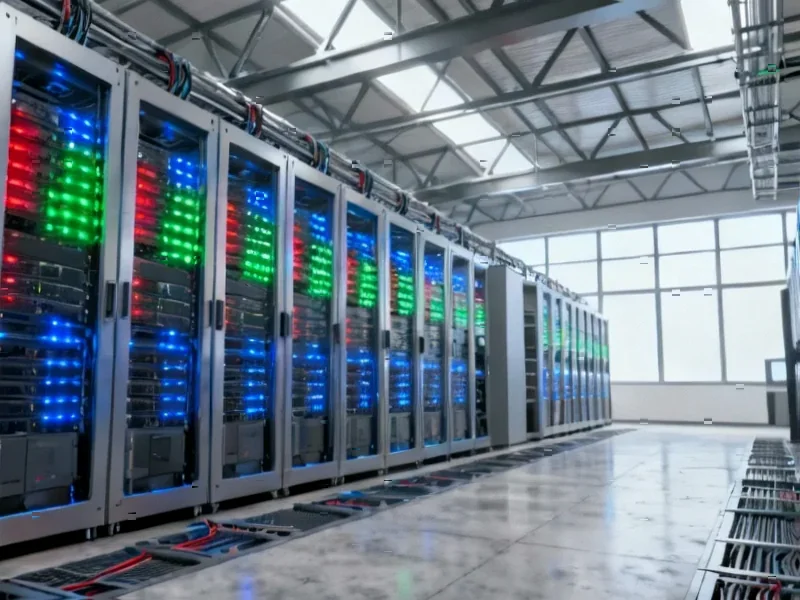According to DCD, Intel is engaged in early-stage acquisition talks with AI solutions provider SambaNova Systems, following reports that SambaNova struggled to complete a recent funding round. The potential deal comes as SambaNova’s valuation has reportedly decreased from its $5 billion peak in 2021, when the company had raised over $1.1 billion in funding. Founded in 2017 and based in Palo Alto, SambaNova previously focused on AI training workloads but pivoted earlier this year to become an AI cloud services provider, launching SambaNova Cloud in September 2024. The company’s SN40L AI chip, launched in September 2023, can run models with up to five trillion parameters. This potential acquisition represents a significant strategic move in the rapidly evolving AI hardware landscape.
Table of Contents
Intel’s Catch-Up Game in AI Hardware
This potential acquisition represents Intel’s most aggressive move yet to close the enormous gap with Nvidia in the AI accelerator market. While Intel has been developing its own AI chips through the Habana Labs acquisition and Gaudi processors, they’ve struggled to gain meaningful market share against Nvidia’s dominant position. SambaNova brings not just hardware expertise but a complete systems approach that includes both training and inference capabilities. More importantly, SambaNova’s pivot to cloud services gives Intel immediate entry into the AI-as-a-service market, competing directly with cloud providers who are increasingly designing their own AI chips. The timing is critical as enterprises are moving beyond experimental AI projects to production deployments, creating a window of opportunity for credible alternatives to Nvidia.
Beyond Chips: The Full Stack Advantage
SambaNova’s real value lies in their integrated systems approach rather than just their chip technology. Their SN40L processor’s ability to handle five trillion parameter models positions them at the cutting edge of foundation model scalability, which is becoming increasingly important as models grow more complex. What makes this particularly strategic for Intel is SambaNova’s Suite product, which enables companies to train custom generative AI models on-premises or in the cloud. This aligns perfectly with enterprise concerns about data privacy and control, offering an alternative to purely cloud-based AI services from major providers. For Intel, this represents an opportunity to sell complete AI solutions rather than just components, potentially commanding higher margins and creating stronger customer lock-in.
The Integration Minefield
The biggest challenge Intel faces isn’t the acquisition price but the integration complexity. SambaNova’s technology stack is fundamentally different from Intel’s traditional CPU architecture, and merging these engineering cultures could prove difficult. We’ve seen similar challenges in Intel’s previous acquisitions like Altera, where integrating FPGA technology took years to yield meaningful results. There’s also the risk of talent flight – SambaNova’s specialized AI engineers are highly sought after and may not stay through a lengthy integration process. Additionally, SambaNova’s pivot to cloud services puts Intel in direct competition with its own cloud customers, creating potential channel conflict that will need careful management. The valuation discount from SambaNova’s $5 billion peak suggests market skepticism about their standalone prospects, which Intel will need to overcome.
Shifting AI Alliances
This potential deal signals a broader consolidation in the AI infrastructure market as the competitive barriers become increasingly insurmountable for standalone players. Companies like SambaNova that raised massive funding during the AI boom are now facing the reality that competing requires enormous capital for R&D, manufacturing, and global sales. For Intel, acquiring SambaNova would immediately position them as a more credible alternative to Nvidia, especially for enterprises looking to avoid vendor lock-in. It also represents a defensive move against AMD’s growing AI ambitions and the threat from cloud providers developing their own silicon. According to Bloomberg and other financial analysts, we’re likely to see more such consolidations as the AI infrastructure market matures and the winners begin to emerge.
Enterprise AI Adoption Acceleration
If this acquisition proceeds, it could significantly accelerate enterprise AI adoption by providing more choice and potentially lower costs. Currently, many enterprises feel constrained by the limited options for production-scale AI infrastructure. Intel’s global sales reach and enterprise relationships could help SambaNova’s technology achieve much broader distribution than it could as an independent company. However, the success of this strategy depends on Intel’s ability to execute – something that has been inconsistent in their recent history. The company needs to demonstrate they can support enterprise AI workloads with the reliability and performance that businesses require for mission-critical applications. If successful, this could be the catalyst that finally breaks Nvidia’s near-monopoly on high-end AI training and inference.
Related Articles You May Find Interesting
- Onsemi’s Vertical GaN Breakthrough Could Reshape AI and EV Power Systems
- Oslo’s Climate Tech Revolution: From Fjords to Food Systems
- Apple’s iPhone 17 Powers Record Quarter as Analysts Boost Targets
- EU’s Tellurium-Free Thermoelectric Breakthrough Nears Market
- ESB Networks’ €6.5M Bet on Ireland’s Electric Future



